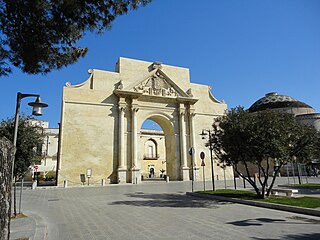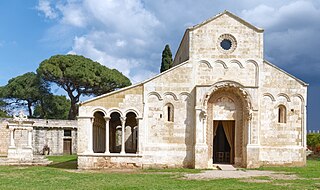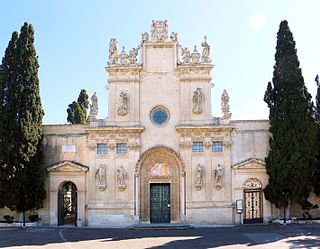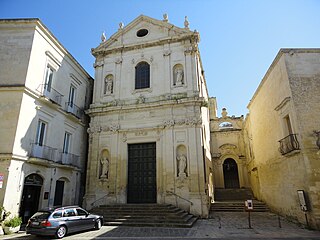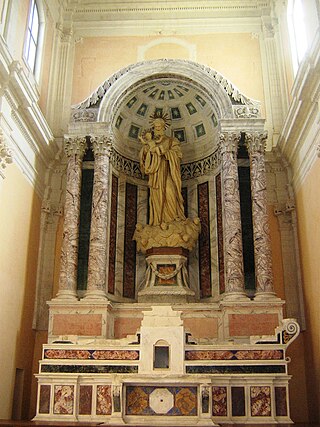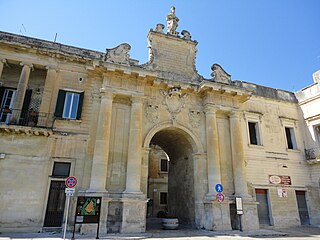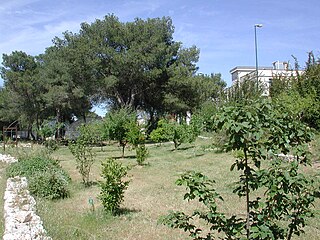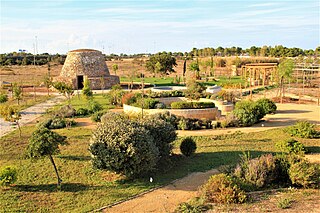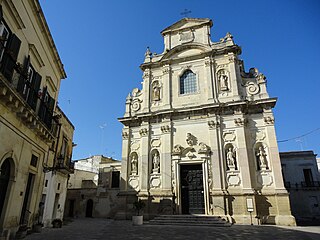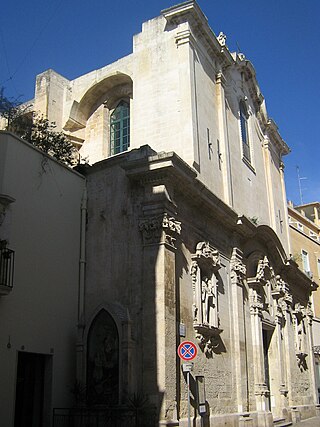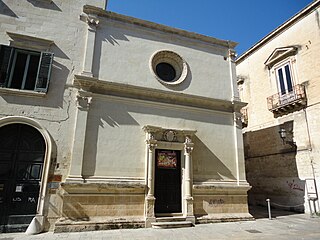16 Sights in Lecce, Italy (with Map and Images)
Legend
Premium Sights
Book tickets, guided tours and activities in Lecce.
Guided Free Walking Tours
Book free guided walking tours in Lecce.
Welcome to your journey through the most beautiful sights in Lecce, Italy! Whether you want to discover the city's historical treasures or experience its modern highlights, you'll find everything your heart desires here. Be inspired by our selection and plan your unforgettable adventure in Lecce. Dive into the diversity of this fascinating city and discover everything it has to offer.
Sightseeing Tours in LecceActivities in Lecce1. Porta Napoli
Porta Napoli is a triumphal arch city gate in Lecce, which marks the entrance to the historic center of the city along with the other two existing gates Porta San Biagio and Porta Rudiae. It is located adjacent to the Arco di Triomphe square and in front of the obelisk of Terra d'Otranto.
2. Parco Archeologico di Valesio
Valesio is an archaeological site south of Brindisi in the province of the same name, reachable from the Brindisi-Lecce highway at the junction for the municipality of Torchiarolo. In the Tabula Peutingeriana this site is indicated as Mutatio Valentia and is located halfway along the so-called Via Traiana Calabra that went from Brindisi to Lecce to continue to Otranto.
3. Chiesa dell'Abbazia di Santa Maria a Cerrate
The abbey of Santa Maria di Cerrate, located on the provincial road that connects the municipalities of Squinzano and Trepuzzi to Casalabate, is one of the most significant examples of Otranto Romanesque. The complex is currently managed by the Italian Environment Fund, which in 2012 acquired ownership, through a thirty-year concession, following a public tender launched by the Province of Lecce.
4. Chiesa di Sant'Irene dei Teatini
The church of Sant'Irene dei Teatini is a Catholic place of worship in the historic center of Lecce. It is dedicated to St. Irene of Lecce, protector of the city until 1656, the year in which Pope Alexander VII proclaimed the patronage of Lecce of a holy bishop: St. Oronzo.
5. Chiesa dei Santi Niccolò e Cataldo
The church of Saints Niccolò and Cataldo is a medieval church of Lecce. Together with the Optiguous Monastery it was founded in 1180 by the Count of Stirpe Normanna Tancredi d'Altavilla, who became king of Sicily. The construction of the Temple represents a real 'model' that innovated and at the same time then directed the architectural and stylical dictates for the creation of the so -called 'new Romanesque hydrutin school' hugging the now stale architecture of the first Romanesque of Terra d'Otranto, where The Latin-Bizino-Epirota component merged with the style of the Alps. Starting from Tancredi, stylistic models that survived for about two centuries until the construction of the church of Santa Caterina in Galatina, of the mid -fourteenth century; Arriving to dictate the architectural lines for the realization of the Cathedral of Matera. The Count donated the complex to the Benedictine monks, which followed in 1494, at the behest of Alfonso II of Naples, the Olivetan fathers who remained until 1807. In 1807 Napoleon sets high schools and the complex became the Palmieri high school. In 1870 the complex became the seat of the kindergarten and starting from the 1980s, it is home to the faculty of cultural heritage.
6. Chiesa di Sant'Anna
The church of Sant'Anna, together with the adjacent Conservatory of the same name, is a Baroque building in the historic center of Lecce built in 1680 and commissioned by Teresa Paladini, at the request of her husband Bernardino Verardi.
7. Chiesa di San Francesco della Scarpa
The church of San Francesco della Scarpa is a church in the historic center of Lecce, so called in the sixteenth century when the Friars Minor who lived in the destroyed convent of Santa Maria del Tempio were divided into conventuals and observants: the former wore shoes unlike the latter.
8. Chiesa di San Nicola dei Greci
The church of San Nicola dei Greci, erected at the behest of Frederick II of Swabia in 1232, is a church in Altamura and is located on the main street of the historic center, Corso Federico II di Svevia, a few steps from the cathedral of Santa Maria Assunta.
9. Colonna di Sant'Oronzo
The column of Sant'Oronzo, about 29 meters high, is located in Piazza Sant'Oronzo in Lecce. On the top it houses the statue of the patron saint, until 2018 the historic one made in Venice in 1739 and from 2024 the new bronze copy made after the restoration of the ancient one no longer hoistable on the column.
10. Santuario di Sant'Oronzo fuori le mura
The sanctuary of Sant'Oronzo fuori le mura is a suburban church in Lecce, Italy. Tradition indicates the Sanctuary as the place where St. Oronzo, the main patron saint of the city and of the whole diocese, was martyred.
11. Porta San Biagio
Porta San Biagio is one of the three access gates to the ancient core of Lecce, dedicated to San Biagio, bishop of the city of Sebaste in Armenia in the fourth century, born in Lecce and then left for Armenia due to persecution from the road on which this gate stands according to tradition. It constitutes the southern access to the ancient urban core. It is located near Piazza d'Italia.
12. Orto botanico di Lecce
The Orto Botanico dell'Università di Lecce, also known as the Orto Botanico di Lecce, is a botanical garden operated by the University of Lecce and located at Via Provinciale Lecce-Monteroni, 73100, Lecce, Apulia, Italy.
13. Orto Botanico del Salento
The Botanical Garden of Salento, located on the eastern outskirts of Lecce adjacent to the ring road, is a park of botanical and landscape interest, partly still under construction. It was initially born as a satellite structure of the Botanical Garden of Lecce, to later acquire (2006) its own legal autonomy following the establishment of the Foundation for the Management of the University Botanical Garden. It is accessed from Via Lorenzo Palumbo, a side street of Via Cantù.
14. Chiesa delle Alcantarine
The church of Santa Maria della Provvidenza, better known as delle Alcantarine by the nuns who occupied the adjacent monastery now demolished, is a church in the ancient village of Lecce. It was built in the early eighteenth century by the architect Giuseppe Cino. Later, in 1724, at the behest of the client Giuseppe Angrisani, baron of Torchiarolo, the project was modified and followed by the architect Mauro Manieri.
15. Chiesa di Sant'Antonio della Piazza
The church of Sant'Antonio della Piazza, also known as the church of San Giuseppe after the saint to whom the confraternity that officiates there is named, is a church in the historic center of Lecce.
16. Chiesa di Santa Elisabetta
The church of Sant'Elisabetta is a small church in Lecce, located in Via Libertini, in the historic center of the city. In ancient times it was dedicated to St. Andrew the Apostle and is also known as Chiesa Nova.
Share
How likely are you to recommend us?
Disclaimer Please be aware of your surroundings and do not enter private property. We are not liable for any damages that occur during the tours.
